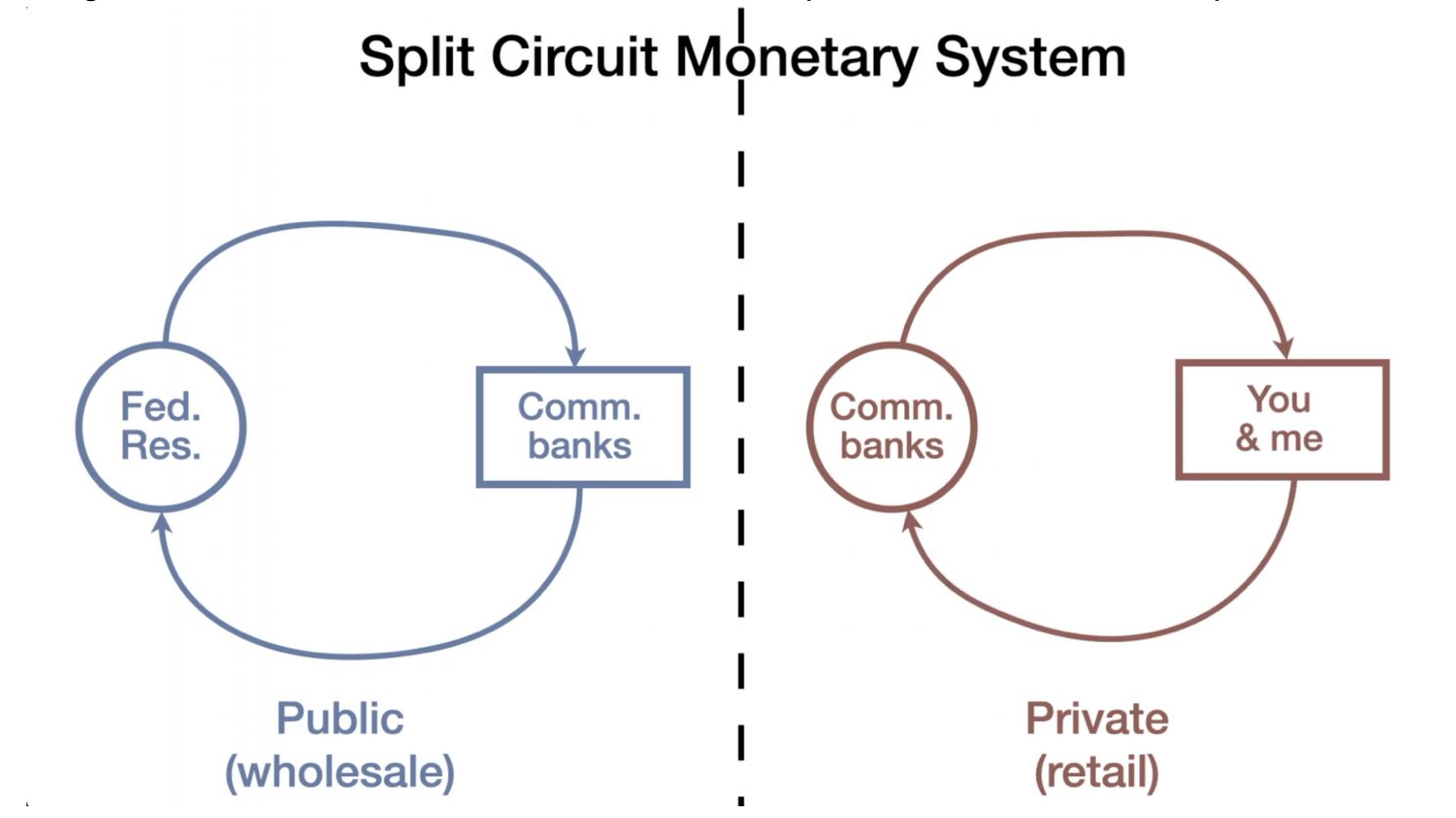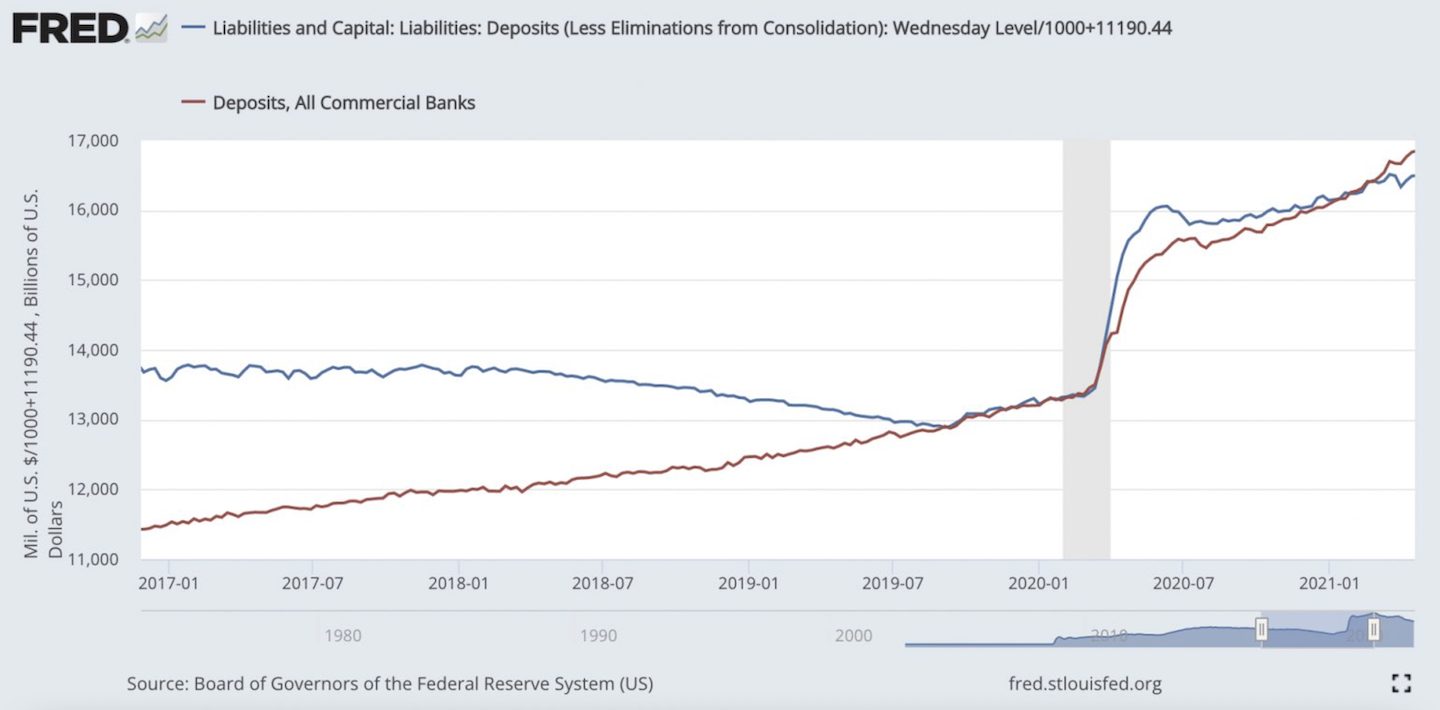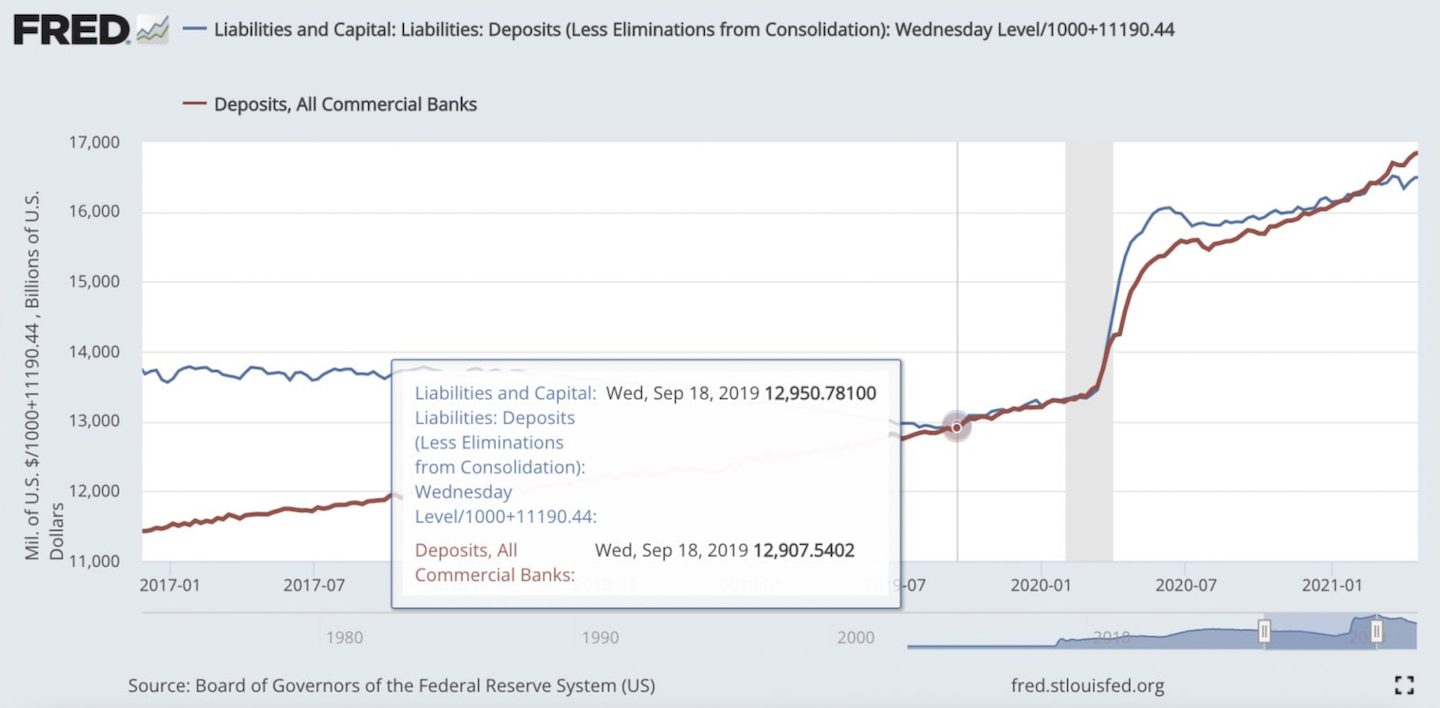 By Josh Walkos
By Josh Walkos
During the last two major crises, in 2008 and 2020, the average person was worried about their retirement or the small business they had taken their life to build up into a viable enterprise. While they were in the fog of war at this time, largely unaware of the high-level moves being made, the financial services company BlackRock took this opportunity to ingratiate itself with the United States government. Right underneath the world’s nose the reins of control changed hands with what amounts to a financial coup that would leave BlackRock with at least $10 trillion dollars worth of assets under management. How did this happen to a company that until recently was little known to the average person? To answer this question we have to go back 34 years.
BlackRock was founded in 1988 by Larry Fink and partners after Fink lost $100M at First Boston. Blackstone’s Pete Peterson and Stephen Schwarzman provided a $5M line of credit for 50% of the business, then called Blackstone Financial Management.[1] In 1994, BlackRock separated from Blackstone, and by 1999, with $165B AUM, it went public on the NYSE at $14/share. Acquisitions & growth followed, including a merger with Merrill Lynch Investment Managers in 2006.[2]
The 2007-2008 Global Financial Crisis catapulted BlackRock into financial dominance. Wall Street turned to BlackRock for help, with firms like AIG, Lehman Brothers, Fannie Mae, and Freddie Mac all hiring them to sort through their complex credit obligations.[3] The US government also turned to BlackRock. Treasury Secretary at the time, Timothy Geithner, and the Federal Reserve both consulted Fink and his firm for help with bailouts, including the rescue of AIG, Bear Stearns, and Citigroup.[4][5]
BlackRock’s influence grew over the years, with powerful politicians, central bankers, and financial insiders joining as advisors, board members, and executives. This has helped BlackRock ensure it’s at the center of important political events.[6] BlackRock founder Larry Fink has consistently sought political influence, bringing figures like Friedrich Merz, George Osborne, and Cheryl Mills on board. Former central bankers like Stanley Fischer and Philipp Hildebrand have also joined the firm.[7]
In August 2019, Larry Fink, CEO of BlackRock, joined the World Economic Forum (WEF) Board of Trustees, the same day the financial coup began. But first, let’s understand the US monetary system, which has two types of money: “bank money” (for the real economy) and “reserve money” (held by banks at the Fed).[8] Historically, the Fed couldn’t “print money” in the traditional sense. Instead, it created reserve money, allowing banks to lend out more bank money in the real economy. But in 2020, the correlation between the Fed balance sheet and commercial bank deposits changed dramatically. The video below will give you a detailed background on where money comes from.[9]
The gap between Fed-created reserve money and bank-created bank money acts as a type of circuit breaker, and this is why the flood of reserve money that the Fed created in the wake of the global financial crisis of 2008 did not result in a spike in commercial bank deposits.
Ultimate Gold and Silver Guide – FREE REPORT
By the time of the pandemic bailouts of 2020, the amount of bank money sitting in deposit in commercial banks in the US — a figure which had never shown any correlation with the total amount of reserves held on deposit at the Fed — suddenly spiked in lockstep with the Fed’s climbing balance sheet.
Going Direct Reset
BlackRock’s August 2019 report, “Dealing with the next downturn,” proposed a new approach: “Going Direct.” This involved central banks injecting money directly into the economy, bypassing traditional channels, and coordinating fiscal policy through “standing emergency fiscal facilities.”[10]
The idea caught the attention of central bankers, who descended on Jackson Hole, Wyoming, for the annual Jackson Hole Economic Symposium taking place on August 22, 2019 — the exact same day that Fink was being appointed to the WEF’s board. By September 2019, Fed monetary creation started to appear in the retail monetary circuit. The Going Direct Reset — a financial coup d’état — had begun.[11]
The theme of the 2019 symposium — which brings together central bankers, policymakers, economists, and academics to discuss economic issues and policy options — was “Challenges for Monetary Policy,” and BlackRock’s paper, published a week in advance of the event, was carefully crafted to set the parameters of that discussion.[12]
Blackrock at this time, in 2019, was worried about the ability of central banks to manage a downturn; in their aforementioned report they state the need not for “The Great Reset,” but “The Going Direct Reset”:
“An unprecedented response is needed when monetary policy is exhausted and fiscal policy alone is not enough. That response will likely involve “going direct”: Going direct means the central bank finding ways to get central bank money directly in the hands of public and private sector spenders. Going direct, which can be organised in a variety of different ways, works by: 1) bypassing the interest rate channel when this traditional central bank toolkit is exhausted, and; 2) enforcing policy coordination so that the fiscal expansion does not lead to an offsetting increase in interest rates.”
This is important to understand. What they came up with is a special purpose facility they called “Standing Emergency Fiscal Facilities” (SEFF). They would inject bank money directly into the commercial accounts of various public or private sector entities.
“Any additional measures to stimulate economic growth will have to go beyond the interest rate channel and “go direct” – when a central bank crediting private or public sector accounts directly with money. One way or another, this will mean subsidising spending – and such a measure would be fiscal rather than monetary by design. This can be done directly through fiscal policy or by expanding the monetary policy toolkit with an instrument that will be fiscal in nature, such as credit easing by way of buying equities. This implies that an effective stimulus would require coordination between monetary and fiscal policy – be it implicitly or explicitly.”
Now remember this was in August 2019, just a few month before COVID entered the fray. Less than one month after BlackRock proposed this revolutionary new type of fiscal intervention, the central banks began implementing that very idea.
Here you can see the correlation between the Fed balance sheet and commercial bank deposits:
In 2020, the “COVID-19 pandemic” provided the perfect excuse for central banks to pump trillions of dollars directly into the economy. But who would manage this unprecedented bailout? The answer: BlackRock.
Were you aware that in March 2020, the Federal Reserve hired BlackRock to manage three separate bailout programs during the economic crisis?[13] BlackRock was hired to manage the Fed’s commercial-mortgage-backed securities program, purchases of newly issued corporate bonds, and purchases of existing investment-grade bonds and credit ETFs.
Was This a Bailout Bonanza for BlackRock?
This wasn’t just an opportunity for BlackRock to gain access to government funds, but also a chance to bail out one of its most valuable assets: iShares, the collection of ETFs it acquired from Barclays for $13.5 billion in 2009, which had grown to a $1.9 trillion giant by 2020.
As Wall Street On Parade reported, BlackRock was allowed by the Fed to buy its own corporate bond ETFs, with taxpayers potentially eating losses that might otherwise accrue to billionaire Larry Fink’s company and its investors.[14]
The New York Times tried to cover the swindle by highlighting that BlackRock would earn no more than $7.75 million per year for the main bond portfolio it managed. But they missed the point: BlackRock’s revenue rose 11.5% to $261 million in Q2 2020 due to a surge in ETFs.[15]
From the article:
“Even if BlackRock waives its fees from the purchases that the Fed is making, the fact that it is associated with this program means that other investors are going to rush into BlackRock funds. BlackRock obviously generates fees from those flows. So the net result is that this is very lucrative for BlackRock.”
After the Fed allowed BlackRock to bail out its own ETF funds, iShares’ assets under management surpassed $3 trillion. But it wasn’t just the Fed; central banks worldwide were hiring BlackRock to manage their market interventions. In April 2020, the Bank of Canada and in May 2020, the Swedish central bank, the Riksbank, both hired BlackRock’s Financial Markets Advisory (FMA) to help with their corporate-bond-buying programs. BlackRock was now dictating central bank interventions globally.[16]
As we dive deeper into the world of BlackRock and its incredible influence on global finance, let’s explore the company’s powerful tools and its commitment to the ESG (environmental, social, and governance) agenda. In 1993, BlackRock developed Aladdin (short for “asset, liability, debt and derivative investment network”), a proprietary investment analysis technology that’s now the core of BlackRock Solutions. It combines portfolio management, trading, compliance, operations, and risk oversight.[17] Today, Aladdin is used by over 200 institutions, managing well in excess of $21 trillion in assets. That’s a significant chunk of the world’s wealth, all dependent on BlackRock’s proprietary software.[18]
As we know, BlackRock is increasingly committed to leveraging artificial intelligence, learning algorithms, and other cutting-edge technologies. The company is replacing underperforming human stock pickers with computer algorithms, like their project “Monarch.”[19] But what is BlackRock’s end game with Aladdin and its AI initiatives? Well, CEO Larry Fink writes an annual “letter to CEOs,” outlining the company’s direction. In recent years, he’s been advocating for the ESG agenda, emphasizing sustainability and the transition to a net-zero world.[20]
ESG is a set of metrics that are being developed by globalist think tanks to serve as a corporate social credit system. If corporations fail to comply with globalist policies, their ESG rating will take a hit, deterring investors. Companies like BlackRock are using their power as asset managers to shape the corporate world according to their will, driving the ESG agenda forward. They’ve even launched Aladdin Climate, a software application that measures the climate risk of investments.
BlackRock is leveraging its powerful technology, AI, and influence over global finance to shape the world’s economy, driving the ESG agenda and shaping the behavior of corporations. It’s crucial to understand the implications of this shift.[21]
BlackRock is not just an investment firm. It’s become a financial, political, and technological colossus with the ability to direct investments of the world’s largest institutions. Its influence stretches far and wide, affecting corporations and individuals alike. The future of the world according to BlackRock is dominated by unaccountable AI algorithms directing investments, digital transactions, and ESG rankings that can make or break companies. It’s a world where power is centralized and wielded by a select few.
Fink’s 2022 Letter to Investors entitled “The Power of Capitalism” lays out the ESG Agenda:
“It’s been two years since I wrote that climate risk is investment risk. And in that short period, we have seen a tectonic shift of capital. Sustainable investments have now reached $4 trillion. Actions and ambitions towards decarbonization have also increased. This is just the beginning – the tectonic shift towards sustainable investing is still accelerating. Whether it is capital being deployed into new ventures focused on energy innovation, or capital transferring from traditional indexes into more customized portfolios and products, we will see more money in motion. Every company and every industry will be transformed by the transition to a net zero world. The question is, will you lead, or will you be led?”
He continues:
“Stakeholder capitalism is all about delivering long-term, durable returns for shareholders. And transparency around your company’s planning for a net zero world is an important element of that. But it’s just one of many disclosures we and other investors ask companies to make. As stewards of our clients’ capital, we ask businesses to demonstrate how they’re going to deliver on their responsibility to shareholders, including through sound environmental, social, and governance practices and policies.”[22]
ESG is a totalitarian attempt towards the financialization of nature through what is called “natural asset corporations”. In a sane world this would be otherwise known as extortion.
Iain Davis gives a great summary of what is going on in his article “Seizing Everything: The Theft of the Global Commons”:
“This will be achieved using Stakeholder Capitalism Metrics. Assets will be rated using environmental, social and governance (ESG) benchmarks for sustainable business performance. Any business requiring market finance, perhaps through issuing climate bonds, or maybe green bonds for European ventures, will need those bonds to have a healthy ESG rating. A low ESG rating will deter investors, preventing a project or business venture from getting off the ground. A high ESG rating will see investors rush to put their money in projects that are backed by international agreements. In combination, financial initiatives like NACs and ESGs are converting SDGs into market regulations.”[23]
It amounts to a Corporate Social Score, if you are a company that refuses to play ball and capitulate to ESG requirements, well, good luck getting the funding for your projects. You will essentially be blackballed and your competitors who did capitulate will be rewarded with funding and eventually market share.
Let’s go back to Fink’s letter earlier this year as it gives us a glimpse at the ESG agendas trajectory:
“Finally, a less discussed aspect of the [Ukraine] war is its potential impact on accelerating digital currencies. The war will prompt countries to re-evaluate their currency dependencies. Even before the war, several governments were looking to play a more active role in digital currencies and define the regulatory frameworks under which they operate. The US central bank, for example, recently launched a study to examine the potential implications of a US digital dollar. A global digital payment system, thoughtfully designed, can enhance the settlement of international transactions while reducing the risk of money laundering and corruption. Digital currencies can also help bring down costs of cross-border payments, for example when expatriate workers send earnings back to their families. As we see increasing interest from our clients, BlackRock is studying digital currencies, stablecoins and the underlying technologies to understand how they can help us serve our clients.”
The good news is that the public is finally becoming aware of BlackRock’s importance on the global financial stage. This is reflected in an increasing number of protests targeting BlackRock and its activities, even if they don’t fully grasp the extent of the agenda. Critics argue that BlackRock’s “sustainable investing” push is a scam, accusing the company of greenwashing. However, this misses the underlying point: BlackRock is interested in turning its financial wealth into real-world power, serving its own agenda, and it has accumulated more power than almost any other corporation on earth.[24]
Some US state governments have begun to divest state funds from BlackRock due to growing public discontent. This shows that the political class understands the public’s opposition to the BlackRock/ESG/corporate governance agenda.[25] 19 states’ attorneys general even signed a letter to Larry Fink in August calling him out on his agenda of social control.[26]
The bottom line is that public awareness of BlackRock’s rise and its influence on global affairs is crucial. It is only through public opinion that we can challenge the wealth and power of such a financial behemoth. BlackRock is one of the top institutional shareholders in companies like Walmart, Coca-Cola, Moderna, Exxon, and Amazon. But who owns BlackRock? Well, it turns out that one of the top institutional holders is The Vanguard Group.
This article only scratches the surface. To truly grasp the extent of BlackRock’s influence you must understand how Vanguard ties into the story. However this is a story for another article but in the meantime you can have a look at this reference to get a sense of Vanguard’s and Blackrock’s combined power.[27]
Blackrock is a leviathan, encompassing every aspect of society. As you can see, it sets the agenda that governments, central banks, and corporations follow. At this point it would be prudent to take them at their word that they are building a worldwide AI-system control grid that can de-rank businesses, institutions, and eventually individuals if they do not comply with the ESG Agenda.
This falls in line perfectly with Agenda 2030, the UN’s Sustainable Development Goals, and the World Economic Forum’s stated goals. The conspiracy is an open one if you know where to look, and with the 2020 Going Direct Reset, BlackRock has conquered the planet, acting in every conceivable role, violating conflict-of-interest rules, and cementing its position as The Company That Owns The World.[28]
Footnotes:
- https://www.vanityfair.com/news/2010/04/fink-201004
- https://www.cnbc.com/2017/06/22/blackstone-or-blackrock-schwarzman-and-fink-did-it-on-purpose.html
- https://www.dw.com/en/blackrock-the-secret-world-power/a-18653761
- https://www-ft-com.ezproxy.depaul.edu/content/6ba0b9aa-1221-11e2-868d-00144feabdc0
- https://archive.ph/xEUeM
- https://archive.ph/1rv5L
- https://campaignforaccountability.org/middle-class-joe-biden-courts-wall-street-oligarch-blackrocks-larry-fink/
- https://www.weforum.org/press/2019/08/world-economic-forum-appoints-new-members-to-board-of-trustees/
- https://odysee.com/@BestEvidence:b/mommy-where-does-money-come-from:3
- http://www.fullertreacymoney.com/system/data/files/PDFs/2019/Augusut/16th/bii-macro-perspectives-august-2019.pdf
- https://archive.is/E6UXV
- https://www.kansascityfed.org/research/jackson-hole-economic-symposium/challenges-for-monetary-policy/
- https://www.nytimes.com/2020/03/27/business/coronavirus-blackrock-federal-reserve.html?smid=nytcore-ios-share&referringSource=articleShare
- https://wallstreetonparade.com/2020/06/blackrock-is-bailing-out-its-etfs-with-fed-money-and-taxpayers-eating-losses-its-also-the-sole-manager-for-335-billion-of-federal-employees-retirement-funds/
- https://www.wsj.com/articles/fed-hires-blackrock-to-help-calm-markets-its-etf-business-wins-big-11600450267
- https://www.bankofcanada.ca/2020/04/bank-canada-introduce-corporate-bond-purchase-program/
- https://www.blackrock.com/aladdin/resources/faqs
- https://www.ft.com/content/5ba6f40e-4e4d-11ea-95a0-43d18ec715f5
- https://www.ft.com/content/e689a67e-2911-11e8-b27e-cc62a39d57a0
- https://www.blackrock.com/corporate/ai
- https://papers.ssrn.com/sol3/papers.cfm?abstract_id=3763042
- https://www.blackrock.com/corporate/investor-relations/larry-fink-ceo-letter
- https://www.google.com/url?sa=t&rct=j&q=&esrc=s&source=web&cd=&ved=2ahUKEwjtuLLOi9f-AhWdF1kFHQtNC6EQFnoECAwQAQ&url=https%3A%2F%2Fiaindavis.com%2Fglobal-commons-part-1%2F&usg=AOvVaw1k8UljGWeDmWtkMtnKu-mJ
- https://nyunews.com/opinion/2021/10/18/larry-fink-climate-hypocrite/
- https://oilprice.com/Latest-Energy-News/World-News/Republicans-Withdraw-1-Billion-From-BlackRock-Due-To-Its-ESG-Policies.html
- https://www.texasattorneygeneral.gov/sites/default/files/images/executive-management/BlackRock%20Letter.pdf
- https://www.investors.com/etfs-and-funds/sectors/sp500-one-investor-is-the-largest-owner-of-two-thirds-of-u-s-companies/
- https://www.investigate-europe.eu/en/2018/blackrock-the-company-that-owns-the-world/
https://wethefree.substack.com/
Source: The Last American Vagabond
Visit TheLastAmericanVagabond.com. Subscribe to TLAV’s independent news broadcast on iTunes. Follow on Facebook and Minds. Support with Bitcoin.
Become a Patron!
Or support us at SubscribeStar
Donate cryptocurrency HERE
Subscribe to Activist Post for truth, peace, and freedom news. Follow us on SoMee, Telegram, HIVE, Flote, Minds, MeWe, Twitter, Gab, What Really Happened and GETTR.
Provide, Protect and Profit from what’s coming! Get a free issue of Counter Markets today.







Be the first to comment on "The Long Shadow of BlackRock"